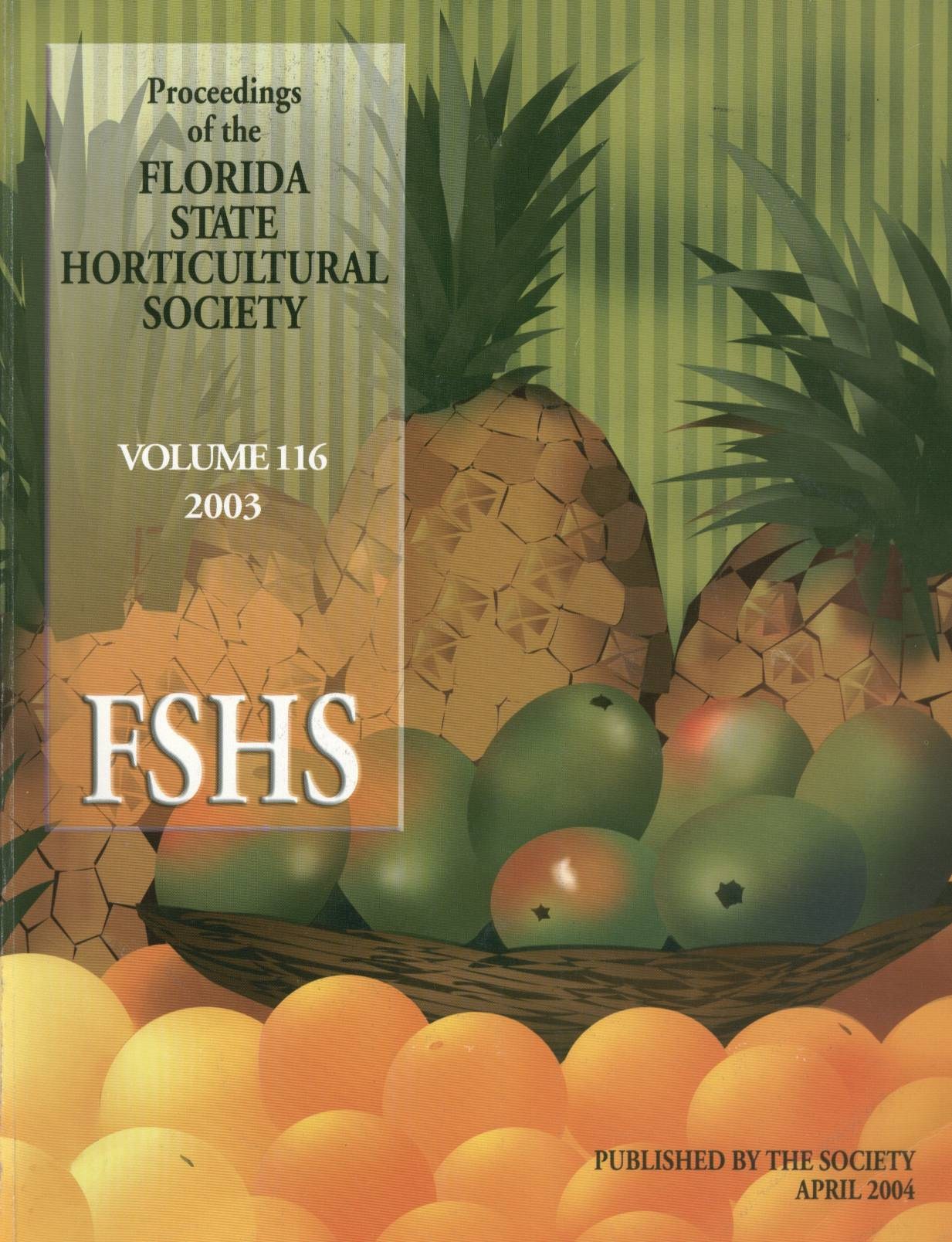Abstract
Florida tomato growers rely on methyl bromide (MBr) to eliminate soilborne pests including weeds, fungi, and nematodes. An experiment was conducted in fall 2001 in Bradenton and Immokalee as part of the USDA-IR4 Methyl Bromide Alternatives Program to evaluate the potential of various chemicals for replacement of MBr in polyethylene-mulched tomato (Lycopersicon esculentum Mill.). Treatment establishment began on 17 Aug. and 13 Dec. 2001 in Bradenton and Immokalee, respectively. In Bradenton, the nutsedge population (six plants per ft[sup-]) with non-treated soil on 6 Nov. 2001 was reduced similarly by 84% to 91% with MBr-chloropicrin (Pic), metam-Na (drip-applied), and pebulate + fosthiazate + Pic. Treatments that failed to control nutsedge were 1.) iodomethane/Pic, 2.) metam-Na (rototilled) with either Pic, 1,3- dichloropropene (1,3-D), or PlantPro 45, and 3.) pebulate + Pic + Na-tetrathiocarbonate (Enzone[tm]). Root-knot(Meloidogyne sp.) nematode populations were not influenced by treatments;however, relative to those with no soil fumigation, populations of sting (Belonolaimus spp.) and stunt (Tylenchorhynchus sp.) nematodes were reduced by 84% to 100% with MBr-Pic, iodomethane alone or with Pic, 1,3-D-35% Pic + trifluralin + napropamide + Pic, metam-Na (drip-applied), metam-Na (rototilled) + 1,3-D, and pebulate + fosthiazate (preplant-incorporated) + Pic. Tomato yield in Bradenton increased from 51 lb per 10 plants with non-treated soil to at least 84 lb per 10 plants with all treatments and was inversely correlated with Fusarium wilt (race 3, incited by Fusarium oxysporum f. sp. lycopersici) incidence. In Immokalee, weed and nematode populations were minimal; however, Fusarium crown rot (Fusarium oxysporum f. sp. radicis-lycopersici) infected 15% of the tomato plants in non-treated soil compared to incidences of 5% or less with metam-Na + PlantPro 20EC, pebulate + fosthiazate (drip-applied) + Pic, Na-azide at 100 lb/acre, and furfural allyl at 600 lb/acre. Tomato yield in Immokalee was not influenced by treatments, possibly due to low pest pressure. No treatment controlled all pests; however, for each pest, one or more treatments performed as well as Mbr.

